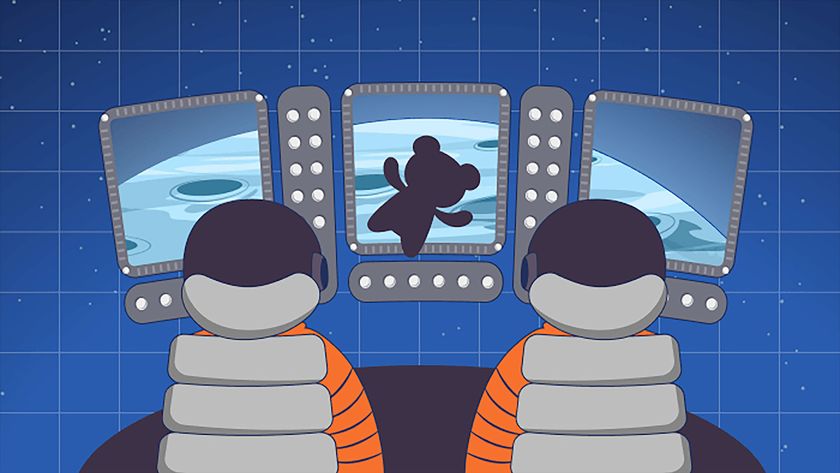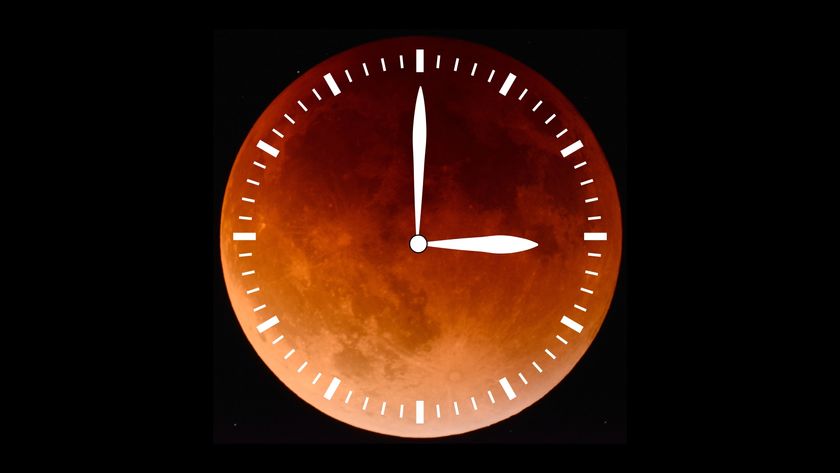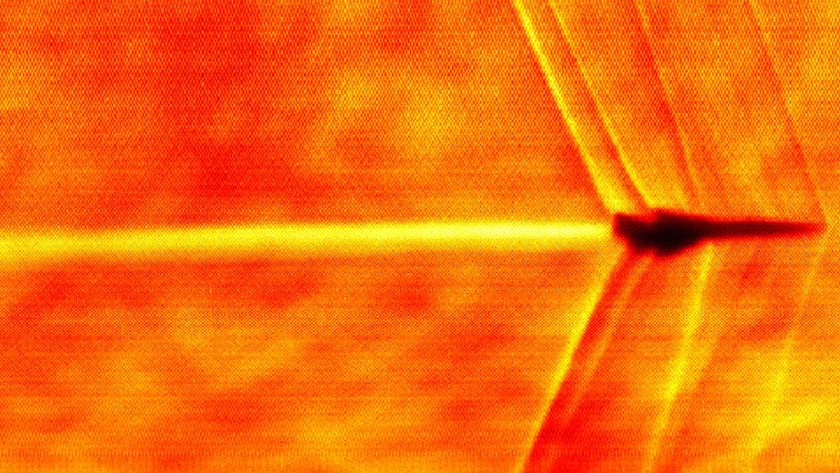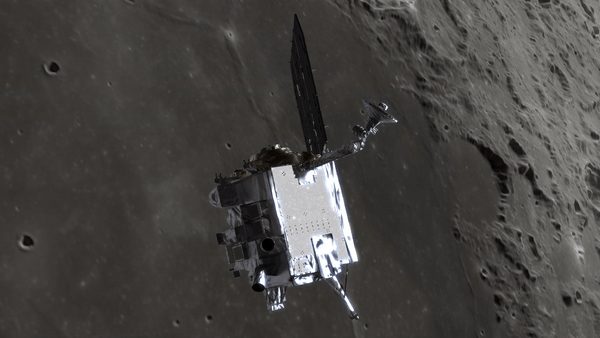Packing Lunches for Space: Scientists Talk Astronaut Health on 1-Year Mission
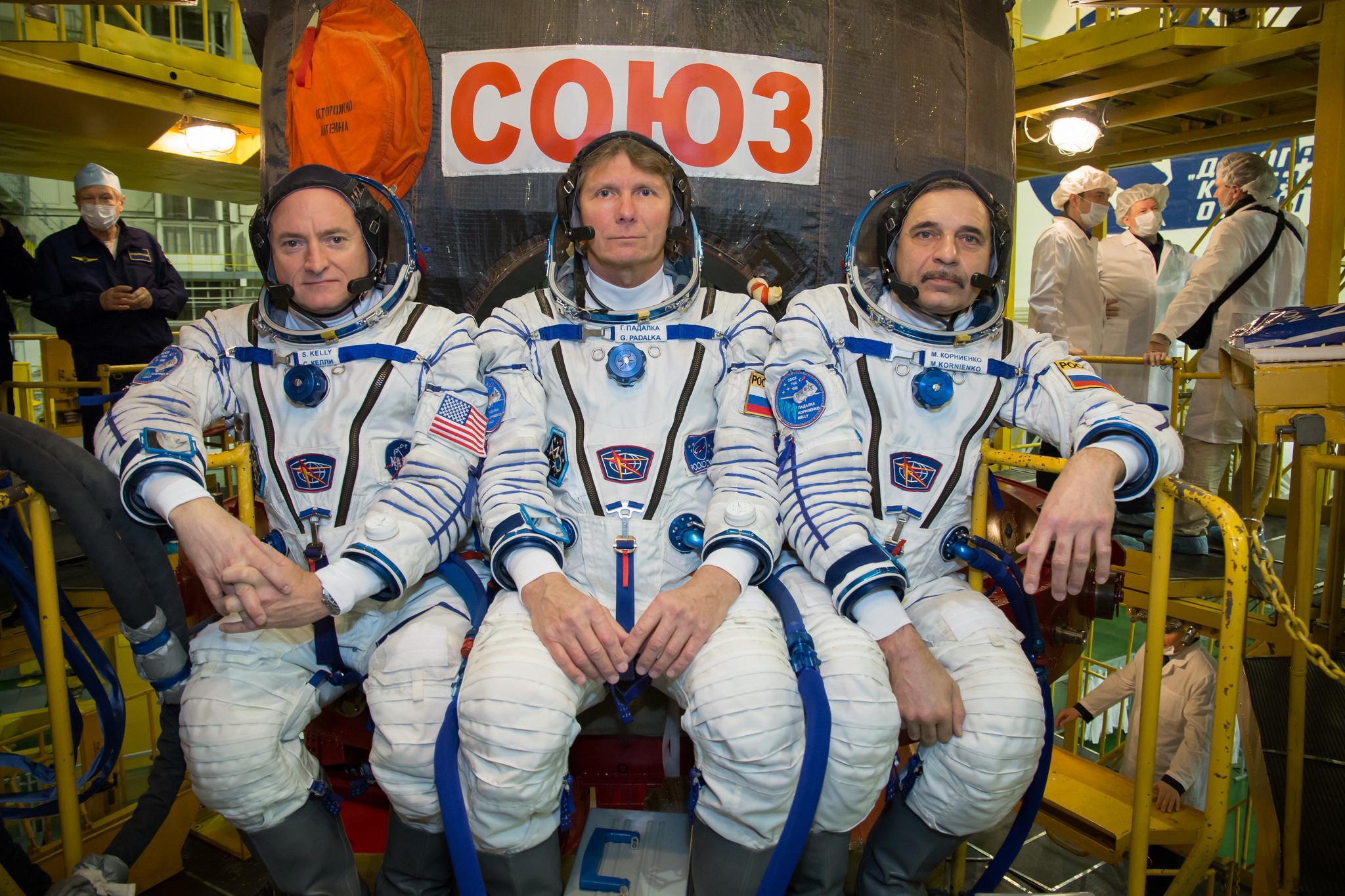
NASA astronaut Scott Kelly and Russian cosmonaut Mikhail Kornienko are back on Earth after spending a record 340 days on the International Space Station. The mission's primary goal was to investigate the physiological and psychological effects of long stints in space, to help pave the way for future crewed missions to Mars.
Last Friday (March 4), a group of NASA scientists fielded questions from the public about Kelly and Kornienko's extended stay on the station, during a Reddit Ask Me Anything (AMA). The scientists discussed specific questions about the physical and metal toll that spaceflight can have on humans — questions they will have to answer before NASA can safely send humans to Mars or other distant locations. You can read the entire AMA here, or check out some of the highlights below.
"It will take 6 to 9 months to get to Mars and 6 to 9 months to get back, and that will be in a zero-gravity environment," Julie Robinson, NASA's chief scientist for the International Space Station, wrote in the AMA. "We need to be sure no health problems will put a future Mars mission at risk. And right now, if we had the vehicle, we would not be ready to go." [Home! Year-in-Space Astronaut Scott Kelly's Earth Return in Photos]
The work begins
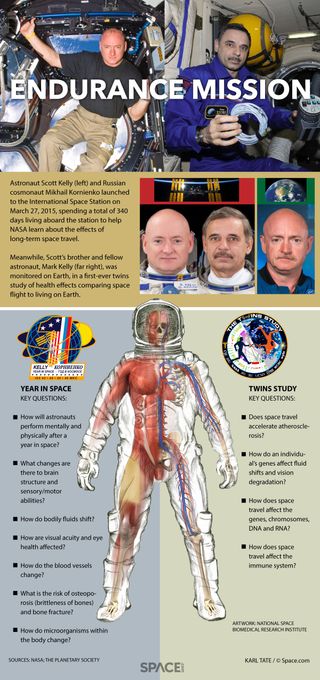
Kelly and Kornienko are not the first people to spend a year in space, but this is the most in-depth study of how such a mission affects the body and the mind. (A typical stay on the space station is about six months.) In addition to studying the two men, scientists also collected data on Scott Kelly's identical twin brother, former astronaut Mark Kelly. The scientists hope to get a look at how spaceflight affects the body on a genetic level.
"From the perspective of NASA's Human Research program, [the One Year] mission is not yet over just because the flight has landed," John Charles, associate manager for international science for NASA's Human Research Program, wrote during the Reddit AMA.
Most of the studies performed on Kelly and Kornienko require data collected before, after and during their flight. Some of the studies will require the continued collection of samples and other data as late as September, wrote Scott M. Smith, nutritional biochemistry laboratory manager for NASA's Human Research Program. In addition, some of the blood and urine samples Kelly collected during the flight are coming back to Earth on a SpaceX vehicle in May. That means scientists will still be working on their results well into 2017.
"The Twins Study data — from all 10 experiments — will be analyzed in bulk, and we hope to publish a main paper first, with likely smaller piece papers to follow," Smith said.
Get the Space.com Newsletter
Breaking space news, the latest updates on rocket launches, skywatching events and more!
Bones, muscles and eyes
Scientists already know quite a lot about the physical changes that humans undergo in weightlessness. People lose muscle mass and experience some bone loss, both of which can be recovered once the astronauts return to Earth. [The Human Body in Space: 6 Weird Facts]
Without gravity compressing the spine, people tend to "grow" a few inches — although Shannan Moynihan, a NASA flight surgeon, told questioners that, "As soon as Scott returned to gravity and stood up, gravity began to compress his spine again. Most likely, he is already back to his prelaunch height."
Some astronauts experience back pain when they return to Earth, and the effect of microgravity on spinal problems is one of the many experiments being done with data taken on the space station.
"We see biochemical changes reflecting return to gravity almost immediately, but bone growth takes time," Smith wrote. "Our estimates from four to six month Mir and ISS missions is that it takes two to three times the length of the mission to recover bone. The great thing about this mission is that we have no idea what happens with crewmembers on one-year missions."
"Much of the change that occurs in weightlessness occurs early in flight — the first few months — and levels off more or less thereafter," Charles wrote. "So in at least a few areas, it is probably okay to extrapolate from 6-month and 1-year missions to 2.5-year Mars missions. But others require different approaches."
Robinson said the study of astronaut vision issues was the most important part of the One-Year Mission.
"About three years ago, we discovered that some (not all) astronauts were having permanent vision loss in space," Robinson wrote. "We think the shift of fluids to the brain causes the optic nerve to swell and press on the back of the eye, literally causing the globe (eyeball) to flatten!" Robinson wrote.
"We hadn't noticed the pattern until we had multiple long-duration missions on the space station!" Robinson continued. The One-Year Mission is 'our first check of the effects beyond 6 months on ISS.'"
One person asked the scientists if living in space affects brain activity.
"That is one of our studies," Charles said. "Scott [Kelly] and other astronauts and cosmonauts have volunteered to do some simple mental and physical tasks (not so simple, maybe — adding numbers, recognizing shapes in different orientations, etc.) — while inside a (sic) MRI so the actual regions of the brain involved in the task can be visualized and measured."
Artificial gravity?

One way to potentially clear up some of the problems that arise d
ue to living in microgravity is to build a ship with artificial gravity (AG), which could be created by making a ship that spins, like a centrifuge. This kind of ship design can be seen in many science fiction books and movies.
"Yes - we've considered AG," Smith wrote. "Lots of issues...e.g., do you spin the whole vehicle? Or put a smaller centrifuge inside the vehicle? Do you need to spin 24h/day? Or is 1-2 hours enough? What level [gravity] do you need? A handful of ground-based bed rest studies have been conducted to assess some of these questions. More are planned. One step at a time."
Robinson said they are using good exercise regimens to protect astronauts' bones, muscles and hearts. "It might be possible to have small artificial gravity options, like a small centrifuge or cycle," she wrote. "NASA has studied artificial gravity for the whole vehicle, and there are technical problems with that in having all the systems operate well. Looked great in '2001: A Space Odyssey,' though."
Senioritis in space
"We know that crew members get ready to come home at the end of their mission," Robinson wrote. "It's a form of 'senioritis' we sometimes call the 'third quarter effect.' As missions get longer, the impacts of being away from your family and isolated from people are expected to be bigger. Scott [Kelly] participated in several studies of performance to get scientific data on this issue."
According to Charles, three major psychological topics being studied in the One-Year Mission are "behavioral medicine (what happens to an astronaut during spaceflight), team (how do groups of people work together effectively in stressful, confined environments) and sleep/circadian rhythm studies."
"There are experiments that the crew are participating in to measure the psychosocial effects of being in space," Robinson said. "Our flight surgeons also monitor each crewmember's well-being during and after the mission."
Moreover, there are support activities for the crew that make a big difference, Robinson said. "Our cargo vehicles bring fresh fruit and care packages, and the crew can call their families on a satellite phone," she wrote. "Those last ones really help, and we can't do them the same way on Mars. I imagine if we pre-position a Mars habitat, we will make sure there are some care package surprises waiting there for the crew."
Diet is a significant part of astronaut health in space — not only for nutritional value but also the psychological effect of eating. But how much choice do astronauts have in their food supply?
"In essence, they can eat whatever they want — from the space food system, which repeats about every 8 days," Smith said. "They also get a set of 'preference' containers to augment nominal food supply (amounts to about 10% of their intake). We track what they eat, and make recommendations, but it is a bit like sending your kid to school with a lunch box. :)" [7 Everyday Things that Happen Strangely In Space]
Additional risks
During the AMA, one person asked, What was the "one thing that you guys were most terrified of in this mission and didn't happen?"
"Our highest risk for loss of any ISS mission is a strike by a piece of orbital debris that causes a depressurization of one of the modules," Robinson said. "We do everything we can to avoid this (debris shields and even moving the ISS if a piece of space debris comes too close)."
If a spaceship travels to Mars, one major health concern will be increased exposure to space radiation. Astronauts on the International Space Station are still close enough to home to be largely protected by Earth's magnetic field (although they still experience higher doses of radiation than people on Earth). One Reddit questioner asked if NASA was getting close to building a module to protect astronauts from radiation on the journey to Mars.
"We don't have this worked out yet," Robinson wrote. "It is one of our top risks for going to Mars. We will need to use some combination of passive shielding, active (electromagnetic) shielding, and use propulsion to go as fast as we can to minimize deep space transit. We don't know the best combination yet."
And will there be another one-year mission on the station in the near future?
"NASA's Human Research Program has requested additional year-long missions on ISS, but all the other aspects of such missions must be considered by all the partner agencies, so no final decision has been made one way or the other," Charles said. "The goal would be to do some of the same or similar work measurements as on Scott [Kelly] so we could see the results on a larger number of people — important because of individual variability between people."
Follow Calla Cofield @callacofield.Follow us @Spacedotcom, Facebook and Google+. Original article on Space.com.
Join our Space Forums to keep talking space on the latest missions, night sky and more! And if you have a news tip, correction or comment, let us know at: community@space.com.

Calla Cofield joined Space.com's crew in October 2014. She enjoys writing about black holes, exploding stars, ripples in space-time, science in comic books, and all the mysteries of the cosmos. Prior to joining Space.com Calla worked as a freelance writer, with her work appearing in APS News, Symmetry magazine, Scientific American, Nature News, Physics World, and others. From 2010 to 2014 she was a producer for The Physics Central Podcast. Previously, Calla worked at the American Museum of Natural History in New York City (hands down the best office building ever) and SLAC National Accelerator Laboratory in California. Calla studied physics at the University of Massachusetts, Amherst and is originally from Sandy, Utah. In 2018, Calla left Space.com to join NASA's Jet Propulsion Laboratory media team where she oversees astronomy, physics, exoplanets and the Cold Atom Lab mission. She has been underground at three of the largest particle accelerators in the world and would really like to know what the heck dark matter is. Contact Calla via: E-Mail – Twitter

